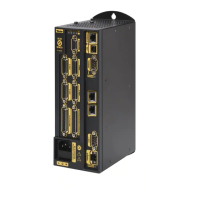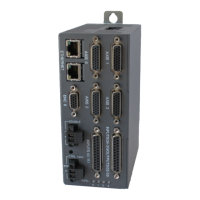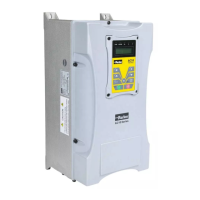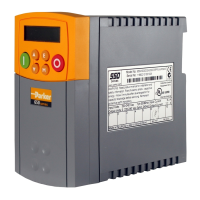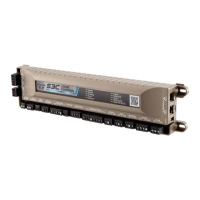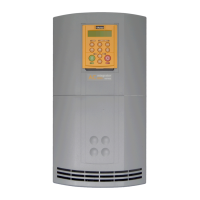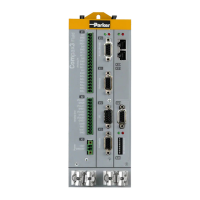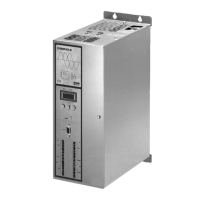Parker Hannifin
Health Period and Node Health
Node health is a way for the master to periodically (known as the Health
Period) ascertain that all nodes are still alive, and to respond appropriately if
one goes “off line.”
There are two health checking protocols, called “Heartbeating” and “Node
Guarding.” Node guarding requires slightly more bandwidth on the CANbus,
but allows disconnected nodes to revert to safe output states. For each node,
there is a Health Type parameter (P33029 for node 0) that serves to request
a certain protocol, and to report the actual protocol used when the network is
started. The default value for this parameter is zero, which instructs the
ACR90x0 to choose the protocol. ACR90x0 uses the Node Guarding protocol
for nodes that support it, and Heart Beating protocol for other nodes. These
are standard CANopen features.
Compatibility is determined automatically when the network is started. The
Health period is set to 10 times the Cycle Period.
Starting and Configuring the Network
An ACR90x0 network master may start and reset the network at any time.
When the network is started via bit 11265, the ACR90x0 initially places all
slaves’ nodes into the “pre-operational” state. During this state, the ACR90x0
interrogates and configures the slaves as required. The slaves are then
placed into the “operational” state, and automatic transfer between the
slave’s physical I/O and the ACR90x0’s I/O parameters and bits takes place.
Before the network may become in the “operational” state, the master must
know how many slave nodes there are, what the node numbers are, and how
many and what type of I/O are on each node.
In some applications, the external nodes may be powered after ACR90x0,
and hence not available for configuration on ACR90x0’s power up. For this
reason, the ACR90x0 user is required to explicitly request network start via a
control flag. The flag (bit 11265) is used for starting the network. The flag is
self-clearing, i.e., cleared automatically by ACR90x0 when the attempt to
start the network has completed. There are also status bits and parameters
to indicate the results of starting the network. Examples would be error bits,
bit rate, cycle period, node status, etc. A typical application scenario would
be as follows.
• Perform application initialization, and dwell or otherwise determine that
external nodes are powered up.
• Write to any required parameters if the values are not yet correct.
• Assert bit 11265 requesting I/O network start.
• Check for success and any other status of interest. For example,
application operation may depend on I/O present, or expected I/O may
be verified.
• Proceed with application that depends on external I/O
Appendix E CANopen 131
www.comoso.com

